 |
 |
 |
 |
 |
 |
 |
 |
 |
 |
 |
 |
 |
 |
 |
 |
 |
 |
 |
 |
 |
 |
 |
 |
 |
 |
 |
 |
 |
 |
 |
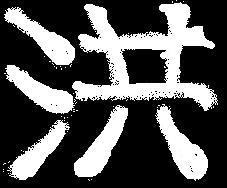 |
|
|
Hung Gar Kung Fu |
|
 |
|
|
|
|
|
Menu |
|
|
|
|
|
The word 'Hung' ('Hong' in Mandarin) is used as a surname name in China. The character is usually used in Chinese language to mean big or vast, or loosely translated to 'magnificent'. It is usually used in water terms such as turbulent wave or flood. |
|
|
|
The word has been used politically ever since a peasant, turned monk, turned resistance leader helped overthrow the Mongols to become the first Emperor of the Ming Dynasty. After ordaining himself, the Red Turban's leader Chu Yun Cheung took the title 'Hung Wu' (Magnificent Power). Since then the word has been used by many involved in the secret societies, such as the triads Fut Paai Hung Ma and Hung Fa Wui, as a reminder to the acts of this man in returning the country to the Chinese.
The phonetics but not the caligraphy is also the same as the colour red, which has a long nationalist relationship with China, beginning with the early secret society the Red Turbans.
Hung Gar's history started after the attack on the Southern Shaolin Temple, the traitor/mercenary Bak Mei continued the pursuit, finding, fighting, and killing many of the escaped monks and anti-Qing, Ming supporters including the abort Gee Sin.
Years before this trouble had started, Hung Hei Gung had married a girl named Fong Wing Chun, and they had a son named Hung Man Ting. Hung Hei Gung was a tea merchant who originally took refuge with the Shaolin Temple when he got into trouble with the local Qing Government. Impressed with what he saw, he took schooling in the teachings of Gee Sim--a master of the 'Long-hand Art'--and Fong Wing Chun--an expert of the 'Short-hand Art'. Along with his wife and son, Hung added the �Tiger and Crane� style, but he only specialised on the powerful tiger techniques, while his wife concentrated on the evasive crane movements.
Hung Hei Gung was very powerful, and reportedly had struck down a man with one punch. However, when he fought Bak Mei, no matter how many times he hit him, he could not do any damage. This was because of Bak Mei�s skill in 'Iron Shirt' qigong. Eventually, Bak Mei wore him down and then killed Hung Hei Gung.
Now his son realised that in order to avenge his father and kill Bak Mei, he would have to combine the techniques of his parents. When the encounter finally occurred, Hung Man Ting was able to seek retribution, getting around the Iron Shirt defence, killing Bak Mai with a crane�s beak peck.
It was mainly Luk Ah Choy (student of Gee Sim and Hung Hei Gung), and Hung Man Ting that were able to carry on the teaching of Southern Shaolin Kung Fu. Because they were still fugitives and Shaolin was still associated with the rebels, they had to hide underground, and disguise their kung fu, naming it Hung Kuen--Hung's style. Nowadays, it is referred to as Hung Gar, (Hung family style). The tradition carried on from master to student from Luk Ah Choy, to Wong Tai, to Wong Kay Ying and then his son--famous for the Tiger and Crane Form--Wong Fei Hung (Mandarin: Huang Fei Hung). |
|
|
| Wong Fei Hung was a martial arts prodigy from an early age, gifted verbally and skilled with traditional Chinese medicine taught by his father. He was born part of a prominent martial arts family on the 9th July 1856 in Fo Shan (Buddha Hill), Guangdong province. The town is famed for its 11th century Zu Miao (Ancestors Temple) where legend states three Buddha statues vanished only to mysteriously reappear during the Tang dynasty. Both he and his father had earned excellent reputations for their medicine and martial arts, which usually went hand-in-hand in old China. At a young age, he used his martial displays to attract crowds who he then allowed to buy his father's herbal wares. At the age of 17, the family moved 28 kilometres northeast to the larger Guangzhou. Here later took over teaching at his father's school and clinic. Initially working security in the local market, he was hired as a boxing instructor and medical doctor to the navy and army. Under General Liu Yong Fu and the Black Flag brigade, he was part of the failed resistance against the Japanese in Taiwan. Legend tells of a challenge between him and a fierce wolf where he killed the dog and another fight on the Hong Kong wharves where dockyard workers attacked him. Here he fought over a hundred men some armed with sticks and metal hooks. He was armed with a long staff, and had to fight-and-run, fight-and-run just to save his life. Although nicknamed 'Tiger Crazy', he acted as a humble man during his life. His favourite weapon was said to be the rope dart, introduced to him by his fourth and last wife--Mok Gwai Lan. He would practise by breaking large wine containers with the spike at the end of this weapon. Wong Fei Hung was married four times and had many children. Three of his wives sadly died due to illness. It is said that his first wife died not long after their wedding. Wong had no children from the first wife however; his second wife bore him two boys who were named Wong Hon-Sum and Wong Hon-Lam. Sadly she also died. His third wife did not live long either, she also bore two sons named Wong Hon-Hei and Wong Hon-Hsu. It is said that Wong Fei Hung's first son Wong Hon-Sum had excellent kung fu however; he was ambushed and shot dead by gangsters. After this tragic incident, Wong Fei Hung stopped teaching kung fu to his other children to protect them. He learned early in life that living with his fists made enemies, while using his medicine made friends. He told people that he was a doctor and not much of a kung fu master. He died broken hearted, after conspirators killed his son and his clinic was burned to the ground in civilian riots, in 1925 at the age of 78. Over a hundred top students of the day were taught by him, including Lam Sai Wing, making him most responsible for the popularity of the Hung style. In 2001, he was honoured with a memorial hall inside the Ancestor Temple in the centre of town at 21 Zu Miao Road, Fo Shan. |
|
|
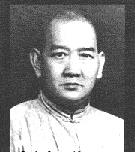 |
|
|
|
 |
|
|
|
|
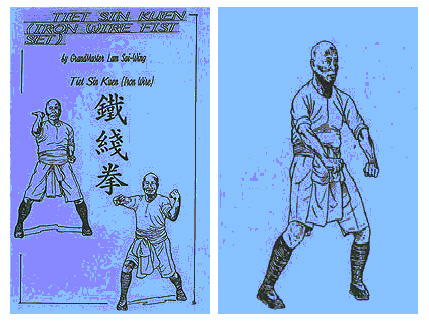 |
|
| Wong Fei Hung's father Wong Kay Ying had gained fame by belonging to the illustrious 'Ten Tigers of Guangzhou', a group of the top martial arts masters in the province. The leader of this elite group was Tiet Kiu Sam (real name Leung Kwan) whose master, Kwok Yan had also learned at the Southern Temple under Gee Sim. Tiet Kiu Sam famed for the Iron Wire Form, taught Lam Fook Shing who then passed this internal energy form onto Wong Fei Hung |
|
|
|
|
|
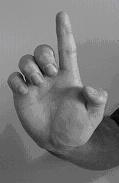 |
|
|
|
|
|
|
The bridge hand posture found in an assortment of Hung Fut forms is inherited from Hung Gar. It has been postulated that the distinctive gesture was part of a secret signal, which allowed anti-Qing rebels to recognize each other in the field. |
|
|
|
|
 |
|
|
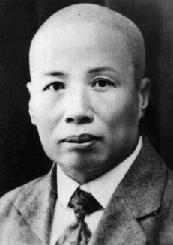 |
|
|
With a history of more than 200 years, the Hung style grew to become one of the most popular methods of kung fu practised in southern China. Wong Fei Hung�s formal exercise patterns, formalized by his student Lam Sai Wing, are known as Fu-Hok Sheong Yin Kuen (Tiger and Crane routines). These are a speciality of modern Hung Gar and were later adapted into Hung Fut. Some additional forms have been added over the years. This is usually based on each master's preferences, as some have had training in other styles before or after they practised Hung Gar, which added extra variety in the Hung Gar style. |
|
|
|
|
|
|
The styles components include the 12 Bridges (connections that link the martial artist with an opponent), animal movements, the Chinese five-element concept, the four-pillars, and breathing control, as well as personal characteristics of honour, character, and earned trust within the family (Gar). Forms include eight-basic low-kicking techniques, 12 hand and forearm strategies, and ten-tiger techniques. These applications are mixed into forms that make up the corps of the Hung Gar style�
� Tempting the Tiger
� Tiger and Crane Combination
� Ten Forms Fist (adapted from 'Five Form Fist')
(Dragon, Tiger, Crane, Leopard, Snake; Metal, Wood, Water, Fire and Earth)
� Iron Wire Form
Skilful boxers of the Hung style have been described as powerful and swift, with a solid, front facing stance. The Hung system uses a combination of short and long-range movements. Blocks and counters have the striking power of a sledgehammer. Good practitioners have understanding and capability of the following...
� Internal and external fundamentals
� Centre of gravity, balance and body position
� The sounds
� The emotions
� Breath control
� Dan Tian focus
� Directions of attack or defence
� Correct use of the limbs and weapons (blocking, attacking, controlling, breaking, grabbing)
� The spirit and focus |
|
|
| Hung Gar Link... |
|
|
 |
|
|
 |
|
|
|
|
|
|
|
|
|
Traditional Hung Kuen Hong Kong |
|
|
|
Y.C. Wong Kung Fu Studio |
|






